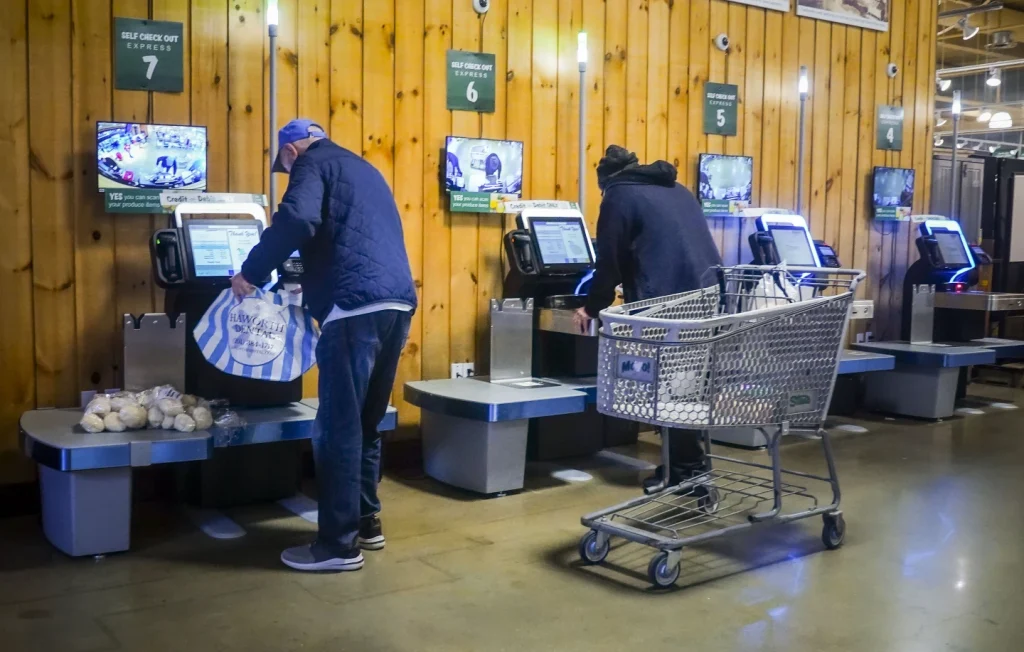The introduction of self-checkout technology in retail stores was initially met with excitement and optimism. Customers were promised a faster and more convenient shopping experience, while retailers looked forward to saving on labor costs.
However, as time has passed, it has become evident that the reality of self-checkout has not lived up to its promise.
One of the most common complaints from customers is the clunky and unreliable nature of self-checkout technology.
Many customers find themselves frustrated by mysterious error codes and malfunctioning machines, leading to longer wait times and increased stress during their shopping experience.
This has led to a sense of disillusionment among consumers, who feel that the convenience they were promised has not been delivered.
In addition to customer frustration, the implementation of self-checkout has also created new challenges for retail workers. Instead of being freed from monotonous tasks, workers now find themselves having to monitor both the self-checkout machines and the customers using them.
This has led to a shift in the nature of their responsibilities, as they must now act as troubleshooters and customer service representatives in addition to their regular duties.
This increased workload has not only added to the stress of workers but has also raised concerns about the potential impact on job security.
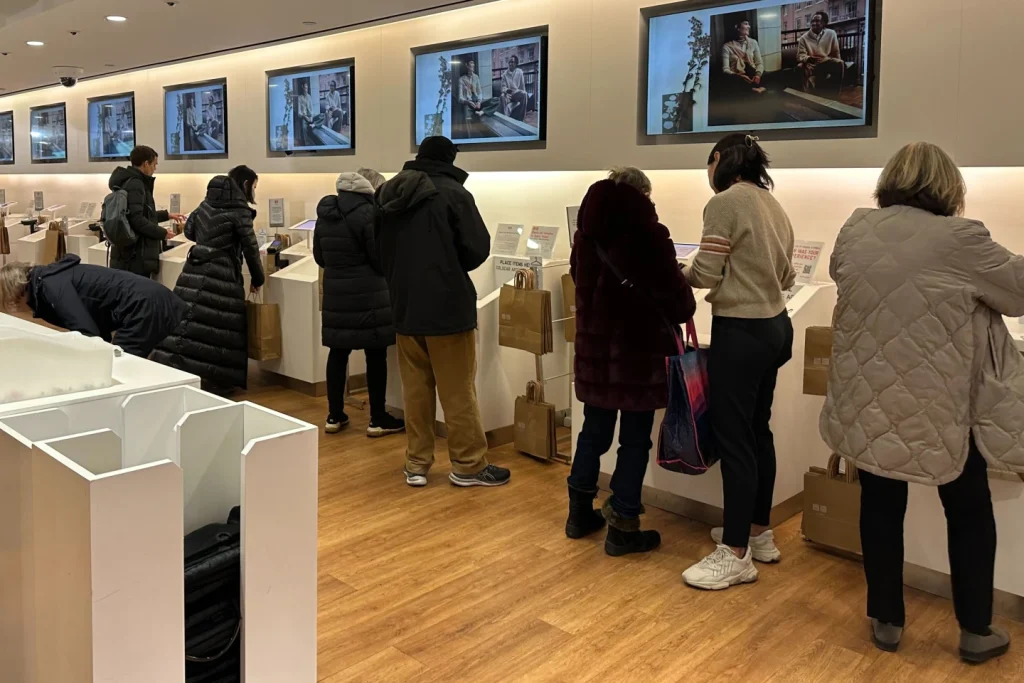
Furthermore, retailers have had to contend with the issue of theft related to self-checkout. The lack of human oversight in these systems has made it easier for some customers to bypass the scanning process or intentionally underreport their purchases.
This has led to increased losses for retailers, further complicating the cost-saving benefits that were initially anticipated.
In light of these challenges, it is clear that the promise of self-checkout has not been fully realized. While the technology has the potential to streamline the checkout process and reduce labor costs, its current implementation has fallen short of expectations.
Customers are left feeling frustrated and dissatisfied, workers are burdened with new responsibilities, and retailers are grappling with increased losses.
Moving forward, it is crucial for retailers to address the shortcomings of self-checkout technology and work towards improving the overall shopping experience for their customers.
This may involve investing in more reliable and user-friendly systems, providing adequate training for both customers and employees, and implementing additional security measures to prevent theft.
By taking these steps, retailers can ensure that self-checkout lives up to its initial promise and delivers on its potential for convenience and efficiency.
In conclusion, the introduction of self-checkout technology has brought about a range of challenges for both customers and retailers. While the concept held great promise, the reality has been marred by technological issues, increased workload for workers, and concerns about theft.
It is essential for retailers to address these issues and work towards improving the self-checkout experience in order to regain the trust and satisfaction of their customers.
Only then can self-checkout truly fulfill its potential as a convenient and efficient alternative to traditional checkout methods.
In 2021, the utilization of self-checkout systems in retail establishments has demonstrated a remarkable increase, with such transactions accounting for 30% of all purchases, nearly doubling the figure recorded in 2018.
This data, derived from a comprehensive survey conducted by the Food Marketing Institute (FMI), a prominent industry organization, sheds light on the growing prevalence of self-checkout services within the retail sector.
Furthermore, the survey revealed that an overwhelming 96% of retailers included in the study reported offering self-checkout options to their customers, indicating a widespread adoption of this technology across the industry.
This substantial uptick in self-checkout usage reflects evolving consumer preferences and the ongoing digital transformation of the retail landscape, underscoring the need for businesses to adapt to changing market dynamics and consumer behaviors.
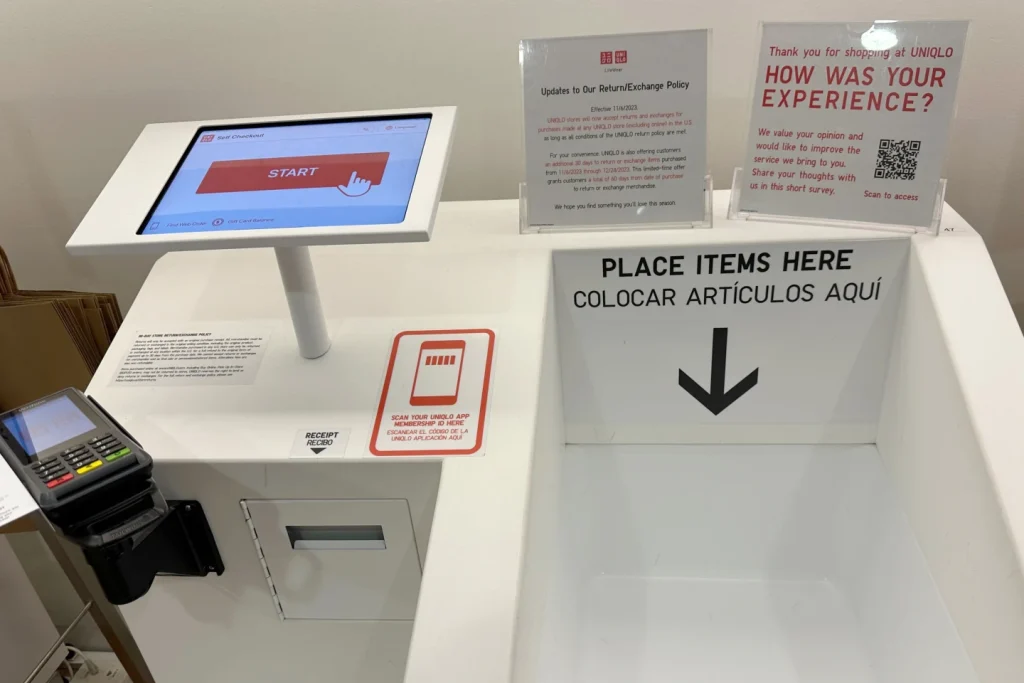
As such, retailers are increasingly recognizing the importance of providing convenient and efficient self-service options to meet the evolving needs and expectations of their clientele. GPT-3.5
The ongoing developments in the realm of technology have brought about a significant shift in the dynamics of retail operations, particularly with the advent of the critical holiday shopping season.
However, amidst the surge in technological advancements, there has been a growing realization of the need for a reassessment of the role of certain technologies in the retail landscape.
This has led to a notable reevaluation and recalibration of the use of self-checkout systems by various retailers.
The recent decision by Walmart to remove self-checkout kiosks from three of its stores in Albuquerque, New Mexico, as part of a location-specific strategy, has sparked discussions about the evolving nature of retail technology.
Despite this, it is important to note that the overall trend appears to be one of expansion rather than contraction, with Walmart actively increasing the deployment of self-checkout systems across its network.
This strategic approach is aimed at enhancing customer experience and streamlining the shopping process, ultimately aligning with the company’s commitment to operational efficiency.
In a similar vein, Target has implemented measures to address potential challenges associated with self-checkout, such as extended wait times.
By imposing limits on the number of items that can be scanned by shoppers in select stores nationwide, Target aims to strike a balance between the convenience of self-checkout and the need to manage customer flow effectively during peak shopping periods.
This calculated move underscores the importance of finding equilibrium in the utilization of technology to ensure a seamless and satisfactory shopping experience for patrons.
The actions taken by British supermarket chain Booths reflect a nuanced response to customer feedback regarding self-checkout systems.
Over the past 18 months, the company has been steadily phasing out self-checkout facilities in the majority of its stores, reflecting a conscientious approach to aligning with customer preferences.
This deliberate shift underscores the significance of customer sentiment and the need for retailers to be attuned to evolving consumer expectations in the retail landscape.
Moreover, the decision by grocery chain Wegmans to discontinue its self-checkout app, citing financial losses, highlights the complex interplay between technology adoption and operational viability.
While the company has opted to withdraw its app-based self-checkout service due to financial considerations, it has maintained the availability of traditional self-checkout registers in its stores.
This strategic maneuver underscores the necessity for retailers to strike a delicate balance between technological innovation and financial sustainability, ensuring that technology investments align with overarching business objectives.
In conclusion, the recent developments in the retail sector pertaining to self-checkout systems underscore the evolving nature of technology implementation and the imperative for retailers to navigate this landscape with strategic foresight.
As retailers grapple with the challenges and opportunities presented by self-checkout technology, it is evident that a nuanced and customer-centric approach is essential.
By carefully considering customer feedback, operational efficiency, and financial viability, retailers can leverage technology to enhance the shopping experience while ensuring sustainable business growth.
This ongoing recalibration of self-checkout systems serves as a compelling testament to the dynamic interplay between technology and consumer-centric retail strategies, ultimately shaping the future of retail operations in the digital age.
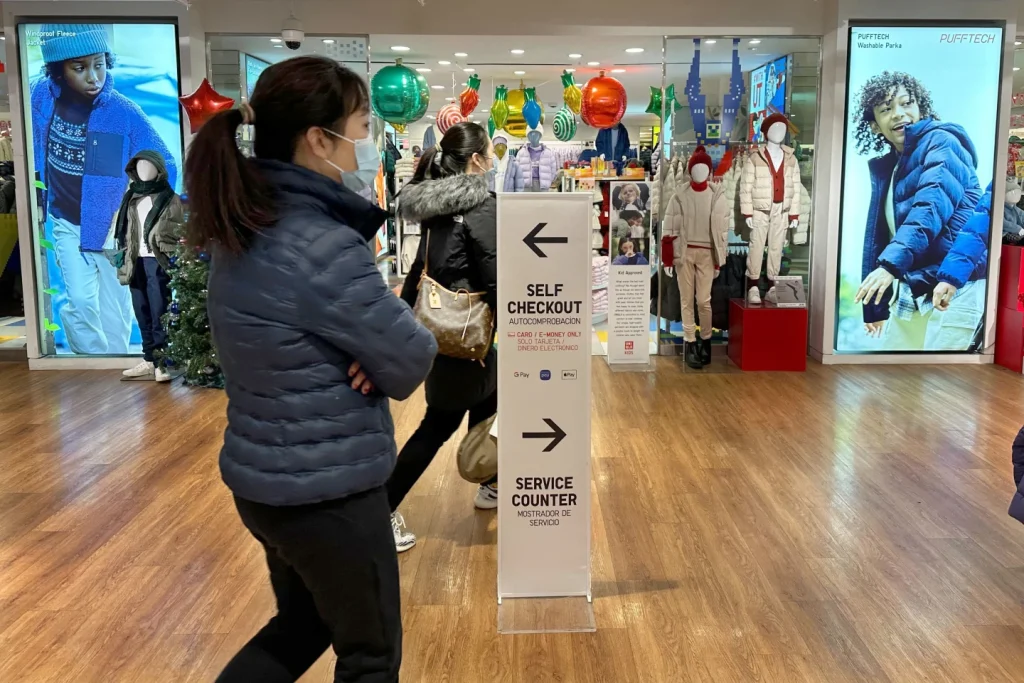
The integration of artificial intelligence (AI) technology within retail environments has become increasingly prevalent, with major companies like Kroger and Amazon leading the charge.
Kroger, for instance, has successfully implemented AI technology across a majority of its stores, employing systems that can detect irregularities and prompt corrective actions.
In the event of a shopper’s unsuccessful item scan, the AI system promptly notifies the customer and provides guidance for self-correction. If the issue persists, the system alerts store staff by activating a conspicuous light above the self-checkout area.
Meanwhile, Amazon has introduced its Just Walk Out technology in over 70 of its own stores and more than 100 third-party retailers in the United States, revolutionizing the shopping experience.
This innovative system leverages advanced cameras and enables customers to enter the store using a credit or debit card, or by simply hovering their palm over an Amazon One palm payment device, allowing them to exit without the need to queue for traditional checkouts.
Additionally, Uniqlo, a renowned Japanese fashion retailer, has adopted RFID technology in its self-checkout system, embedding RFID chips in price tags to facilitate a seamless payment process.
Despite these technological advancements, the introduction of self-service technologies has not been without its challenges.
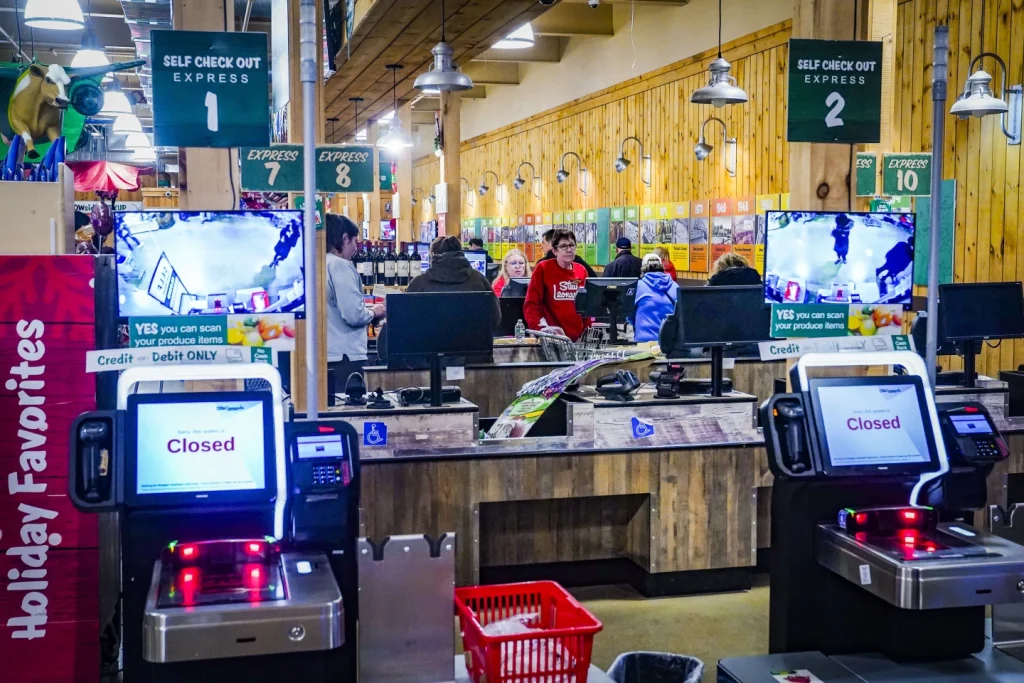
Workers, such as Bernadette Christian, a 59-year-old employee at Giant Food in Clinton, Maryland, have found themselves managing multiple self-service stations simultaneously, facing increased stress and apprehension when dealing with agitated customers.
Christian, for one, expressed concerns about the safety and the elevated tension of the current environment, reflecting the evolving landscape and complexities associated with the adoption of advanced retail technologies.
